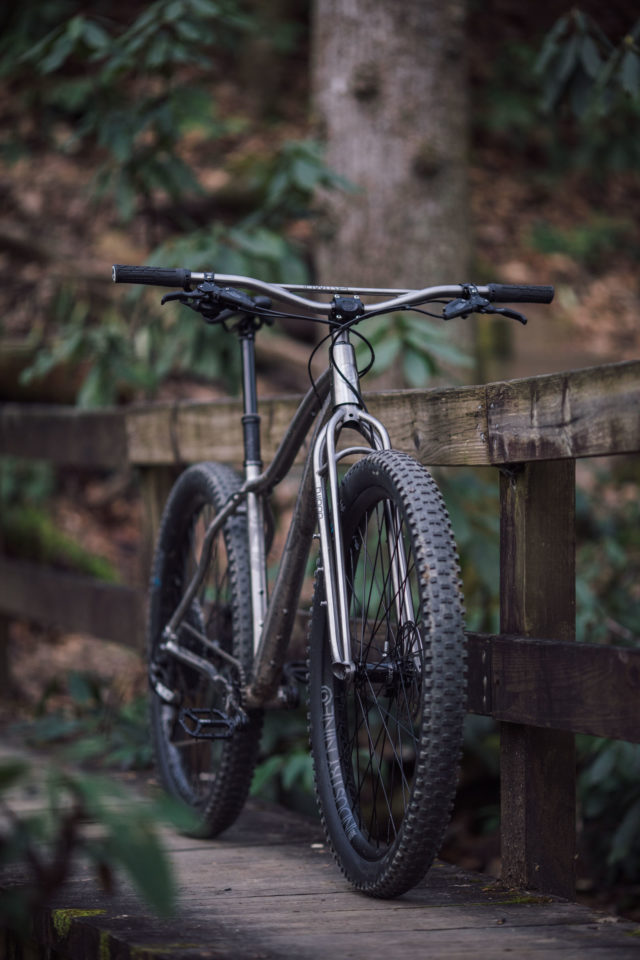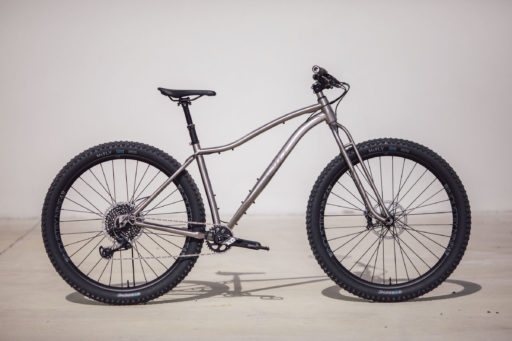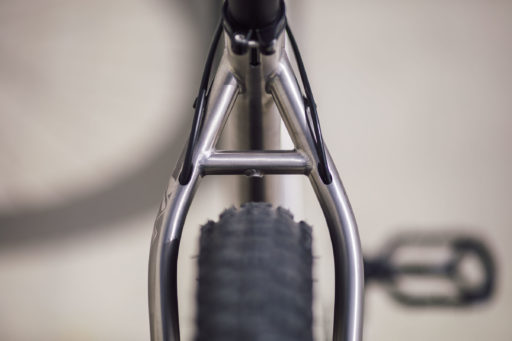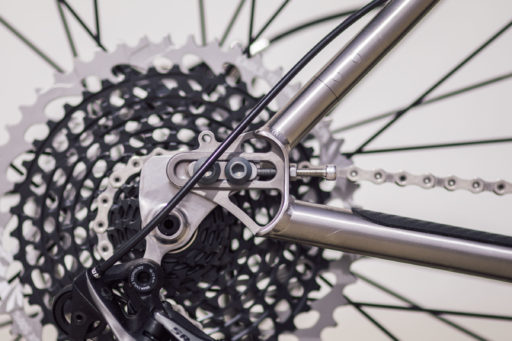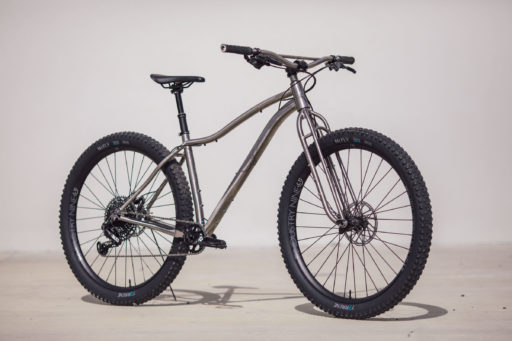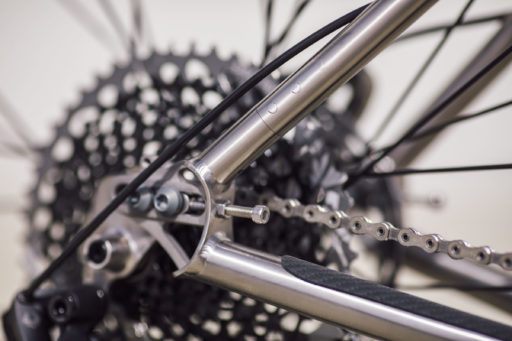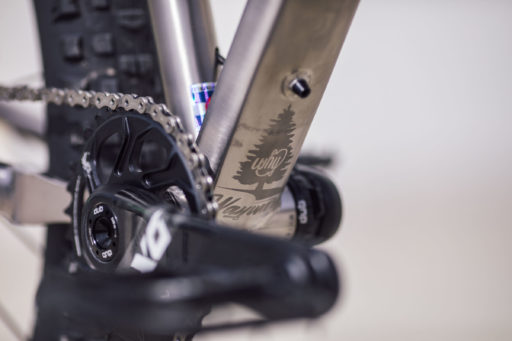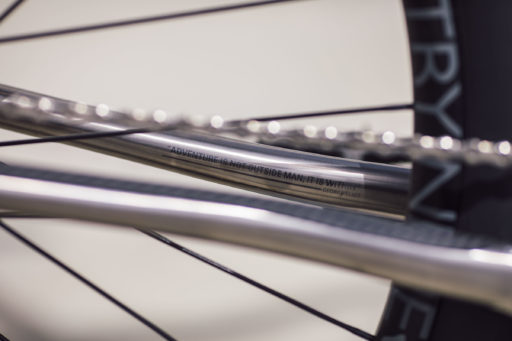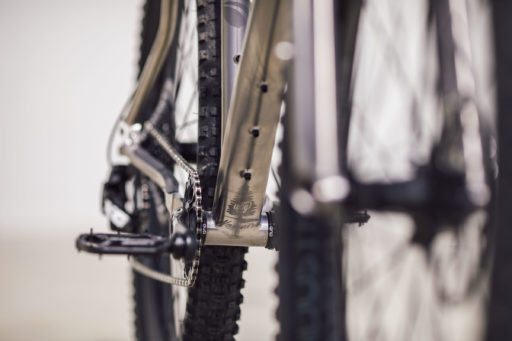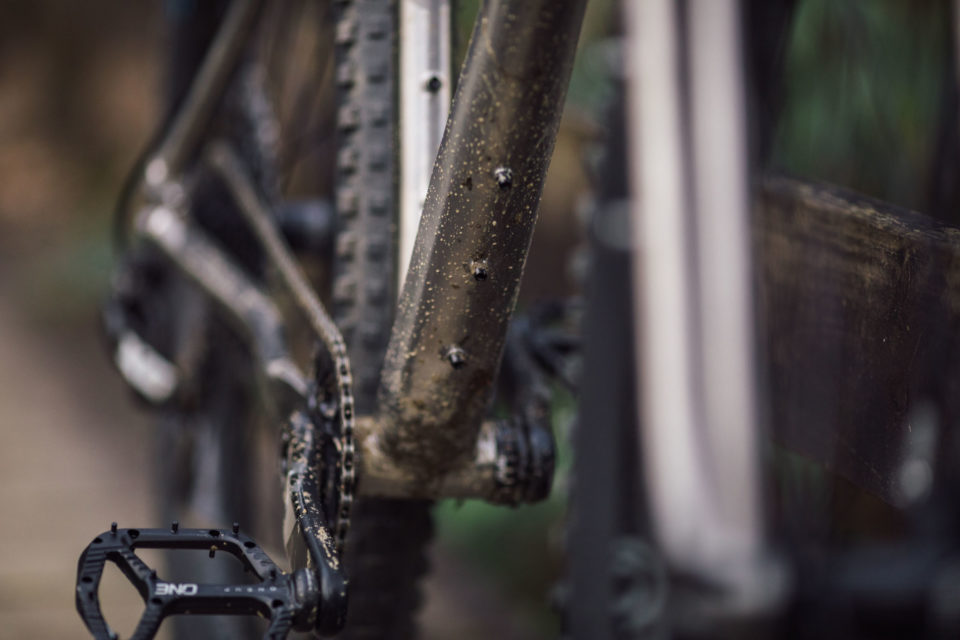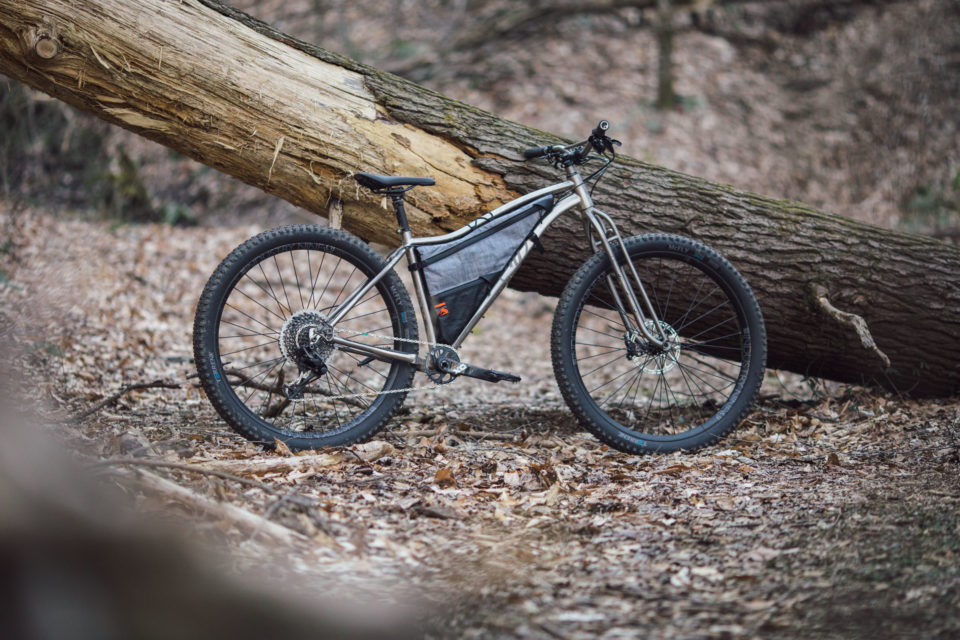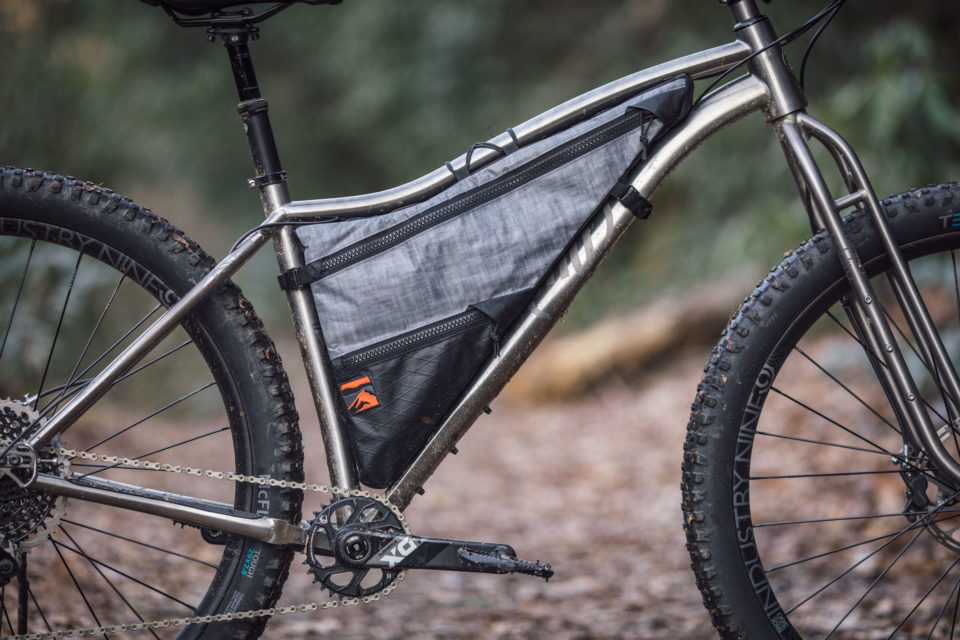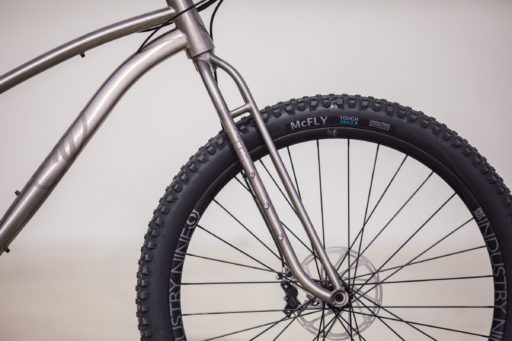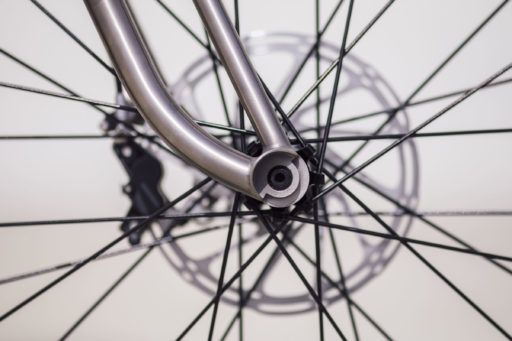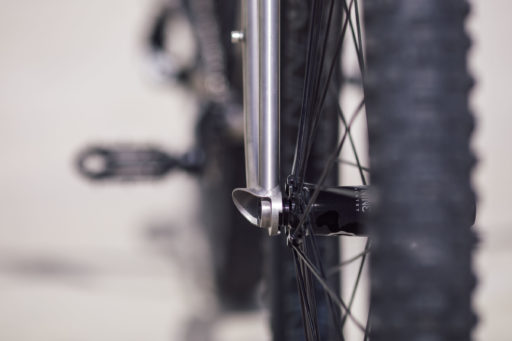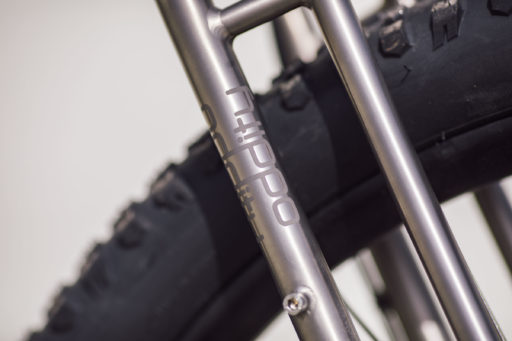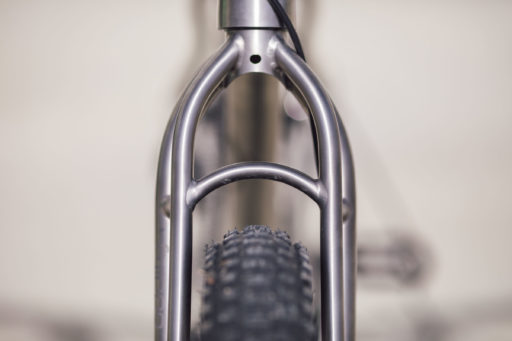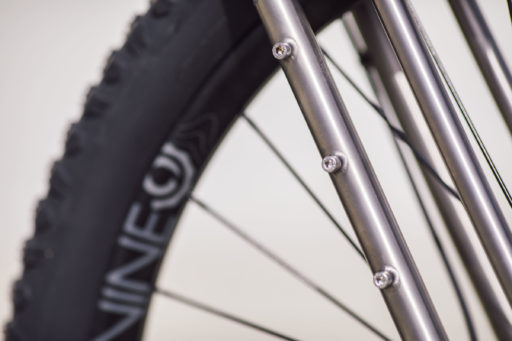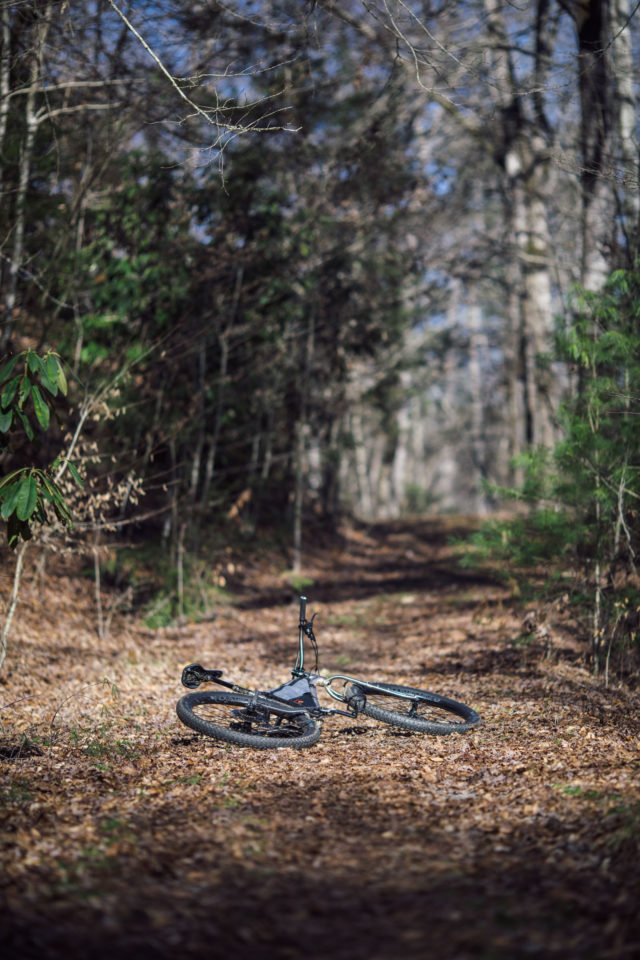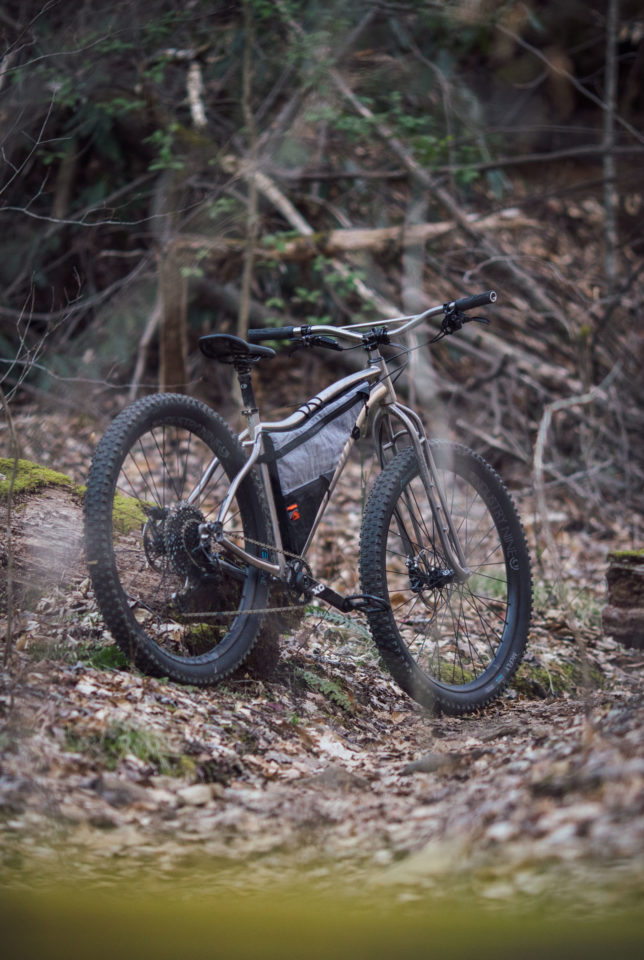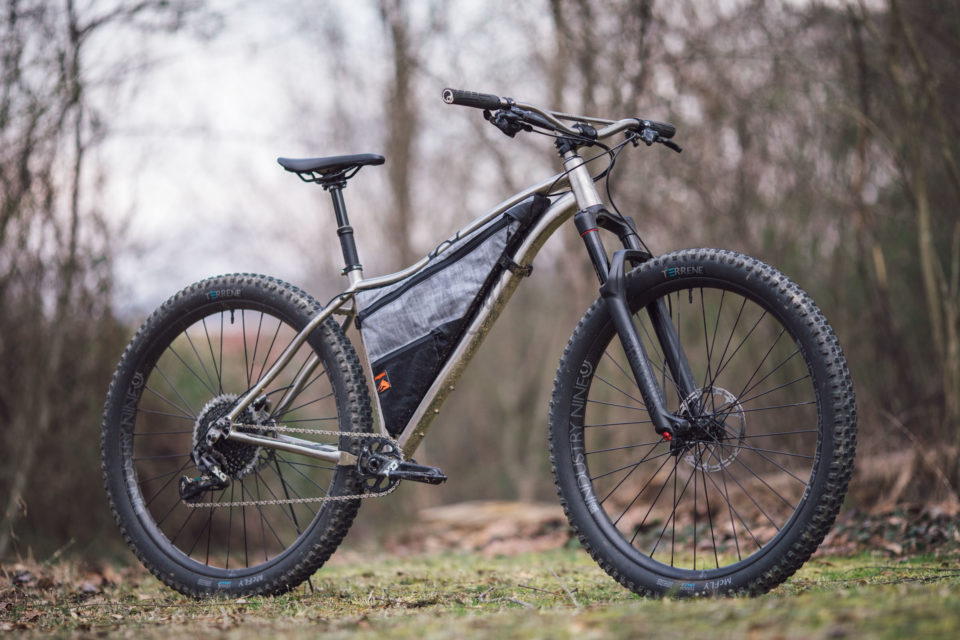Meet The New Why Wayward V2 (SquidWard!)
Share This
The 2020 Why Wayward V2 was redesigned with a higher stack, more tire clearance, and a few other tweaks to improve its ride quality. We got our hands on the high-end build, featuring the new Oddity Squidfork and Lowrizer handlebar. Dig in for our initial impressions on the “SquidWard” and find all the specs, plus loads of photos…
Back when TJ Kearns reviewed the original Why Cycles Wayward and referred to it as the unicorn, I couldn’t help but be intrigued. TJ is one of those people whose judgement I genuinely trust when it comes to all things bike-related, so after he fawned over the Wayward, I was a little envious that it wasn’t me who got to test drive it. He ended up buying one, though, so now my time has come!
Why Cycles recently sent me their updated Wayward V2 to try, complete with the new high-end “SquidWard” build featuring the Colorado-made Oddity Squidfork and Lowrizer handlebar. I must say, after half a dozen rides, I think I’ve also been moonstruck by the unicorn. Here’s what’s changed, details about the geometry tweaks, my first impressions, and a ton of photos.
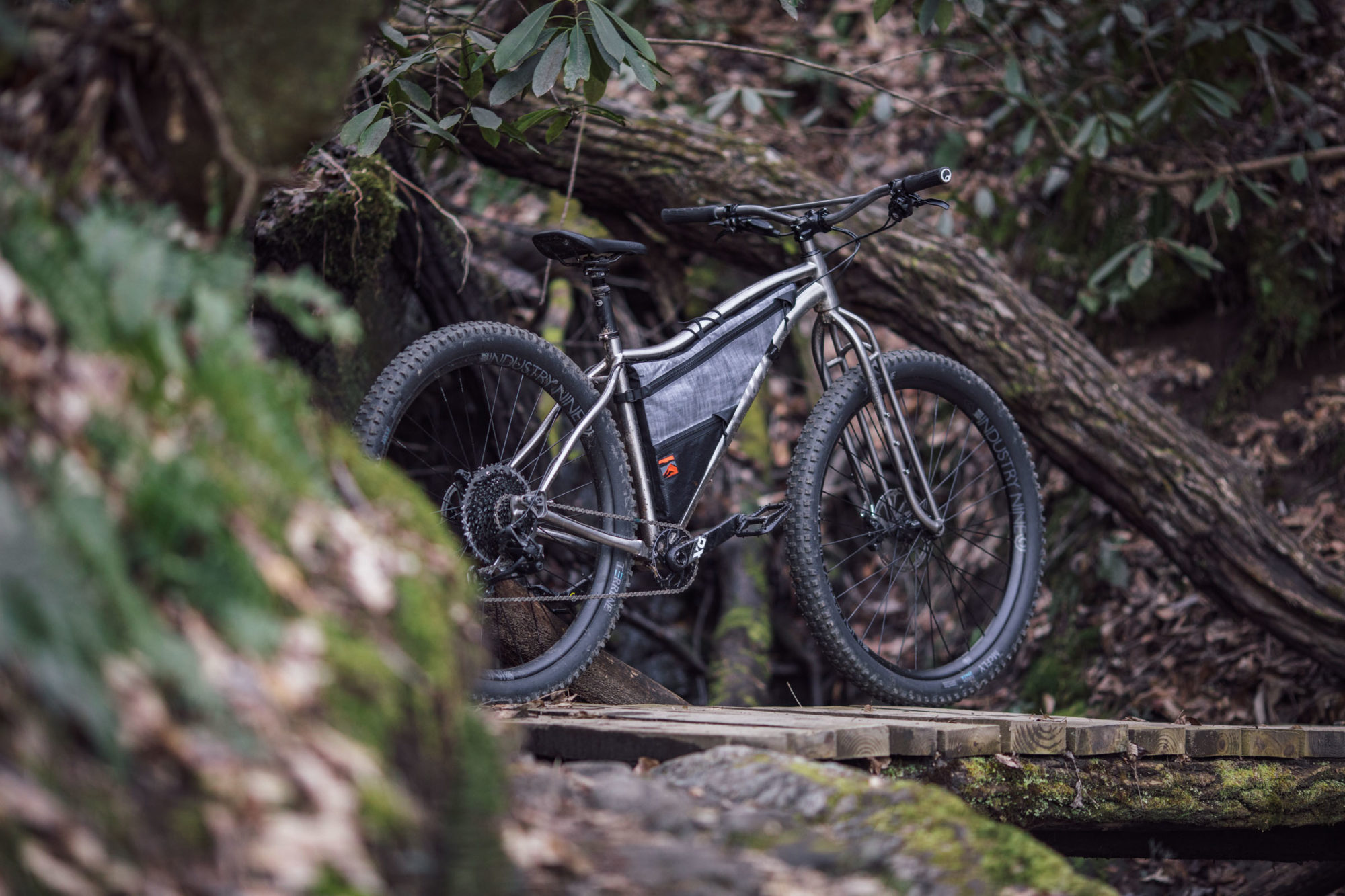
Originally released in May of 2017, the Why Cycles Wayward was the fourth bike model from the relatively small Carbondale, Colorado-based company. Following the S7, their 27.5+ “all-mountain” trail hardtail, and the R4, a drop-bar gravel bike, the Wayward was conceived to be equal parts bikepacking rig and trail bike. Even so, the Wayward clearly stood out in the lineup as a multi-day adventure bike. Not only was it named accordingly, the Wayward was built around 29+ tires, which at that point in time seemed to be the legacy platform for bikepacking.
The V1 Wayward was a little different from most of its 29+ forebears, however. In addition to unique aesthetics, it was designed from the ground up for 29 x 2.8″ tires (instead of full 3.0″) with more of a trail bike demeanor and the intent on being the best 29+ bike on the market. On that note, some might even argue that its ongoing success is a testament to the fact that 29+ is still alive and well.
What’s Changed
At its heart, the Why Wayward V2 is still (relatively) the same 29+ adventure bike built using the same unique cold formed 3/2.5 titanium tubing and Ti sliding dropouts. It just took on a few refinements to improve the ride and expand its capabilities. Most notably, the overall geometry has been corrected for a 120mm suspension fork instead of 100mm. The yoke and chainstay bend were also tweaked to increase tire capacity and fit a full 29 x 3.0″ tire with even more mud clearance.
In part due to the additional suspension correction, there were also a lot of small tweaks and changes to the geometry for V2. Here’s a chart comparing V2 with the original (both sets of numbers are the specs for a size large, all represented in millimeters).
| Wayward Version | V1 | V2 |
|---|---|---|
| Top Tube Length | 619 | 622 |
| Seat Tube Length | 510 | 460 |
| Head Tube Length | 108 | 116 |
| Chain Stay Length | 440-455 | 435-450 |
| BB Drop | 70 | 70 |
| BB Height | 301 | 312 |
| Head Tube Angle | 68.3° | 67.0° |
| Seat Tube Angle | 73.5° | 73.0° |
| Wheel Base | 1190 | 1204 |
| Axle-to-Crown | 523 | 543 |
| Stack | 636 | 656 |
| Reach | 475 | 465 |
Aside from the 1.3° slacker head tube angle and 0.5° slacker seat tube—both added to compensate for the additional 20mm of suspension travel—the most significant change to the geometry is a 50mm shorter seat tube. The idea was to allow for a dropper post with more travel. This will likely be a welcome subtraction to those with normal-to-short legs, but it also effectively reduces the size of the frame triangle, in turn shrinking the frame bag space. That said, Why also added an 8mm extension to the frame’s head tube, which opens up the top of the triangle and offsets some of that loss in space. The underlying reason for the head tube extension, however, was to increase the stack height and provide a little more of an upright position, something that will please long-haul riders.
When comparing the Why Wayward V2 to other popular 29+ bikes, it’s worth noting a few standout numbers in the geometry chart. For one, the Wayward has a significantly lower bottom bracket and a 1° slacker headtube than bikes such as the Krampus, Prospector, and Timberjack. It also has a fairly long reach and higher stack height than most.
One other significant modification to the Wayward V2 frame is the addition of a lot more mounts. There are now three-packs on both the top and bottom of the downtube (V1 had a pair on the frame’s underbelly). They also added a pair of accessory mounts under the top tube for mounting another bottle, and a single at the front. This primes the triangle for an almost full bolt-on frame bag. The one shown above was beautifully made by Asheville-based Rockgeist from a photo I emailed to them. Using a slotted, reinforced bolt-on system and a lace-up top, it fits perfectly and has a bit more interior volume than I expected. Also, note how they made the bottom panel/zipper line up with the brace on the Squidfork!
Build Kit (SquidWard)
Pricing for the new Wayward frame remains the same. The $2,449 price tag includes the headset, seat collar, anodized water bottle bolts, and a rear axle. Why also offers frame and fork options that start at $3,049 with a RockShox Yari and a $1,000 more for the Oddity Squidfork. Complete builds with SRAM components and Industry Nine wheels start at $4,799. Here’s the rundown of the build I’m testing, which is very close to the $5,899 Eagle X01 kit with the addition of the Squidfork and Oddity Lowrirer bar. This build known around the Why Cycles HQ as the “SquidWard.”
- Frame Why Cycles Wayward (size large)
- Fork Oddity Cycles Squidfork
- Rims Industry Nine Backcountry 360 Alloy
- Hubs Industry Nine Hydra with I9 system spokes
- Tires Terrene McFly 29 x 2.8″ (Tough casing)
- Handlebar Oddity Cycles Lowrizer (800mm)
- Grips Ergon GE1
- Brakes SRAM G2
- Rotors Avid Centerline 160mm
- Crankset SRAM Eagle X01
- Derailleur SRAM Eagle X01
- Shifter SRAM Eagle X01
- Cassette SRAM Eagle X01 10-50T
- Chain SRAM Eagle X01
- Seatpost Crankbrothers Highline 150
- Saddle Ergon SM10 Standard
- Frame Bag Custom Rockgeist Full Bolt-on
I have no real complaints about the overall components used in this build. The Ergon GE1 grips aren’t my favorite, so I’d swap those out for the GA1s. I replaced the Descendant stem with a 50mm Paul Boxcar as it allowed a better rotation of the bars. Otherwise, the rest of the kit is pretty solid. Here are some details about the two prized upgrades.
Oddity Cycles Squidfork
The Squidfork is a titanium, single crown truss fork handmade by Oddity Cycles in Fort Collins, Colorado, and named for its thin, tentacle-like legs that spread from the crown and converge at the axle. While Oddity offers a semi-custom version of the Squidfork, this one was designed specifically for the Wayward’s geometry and is suspension corrected for this frame. According to Oddity Cycles owner Sean Burns, “This particular truss is pretty tall by rigid fork standards, suspension corrected, and was built to carry that stress load (leverage ratio). Building a +500m axle to crown rigid fork NOT as a truss style would require some crazy heavy, overbuilt tubes to be safe. This would weigh a ton and sacrifice ride quality.”
Compared to traditional forks with two legs, Squidfork’s four smaller, thinner wall tubes offer more surface area to further dampen trail vibration and chatter before it gets to your hands. It’s also not too shabby to look at. Another issue addressed with the Squidfork’s truss design is brake dive, which is the rearward movement that happens on disc-brake rigid forks (mostly carbon) when hard braking. Brake dive is especially apparent in tall forks. Also relevant in that comparison is the Squidfork’s weight. This one weighed in on our scale at 1031 grams, which is a little more than comparable carbon forks, like the 790g Firestarter Deluxe, but less than most steel forks, such as the 1.4kg Krampus 110.
All in all, I really like this fork. It has a unique feel, but once I settled into it I thought it imparted one of the better rides I’ve experienced on a rigid bike. I had the opportunity to get four solid rides on the Wayward with the Squidfork. All were a mix of double track roads, gravel, and Pisgah singletrack. It definitely does a great job at soaking up vibrations and small bumps. It even feels surprisingly shock absorbent when riding over big bumps and drops. I had the 29 x 2.8″ Terrene McFly tires set up tubeless with about 15-17PSI. The voluminous tires do some of the work, but I could definitely discern the feel of the fork.
Oddity Cycles Lowrizer Handlebar
You’ve seen the Oddity Cycles Razorbar reviewed on this site before, but the Lowrizer is relatively new for Oddity—it was just released back in August. Like the Razorbar, the Lowrizer is shaped by hand, TIG welded, and finished in Fort Collins, Colorado. However, it uses a 1/2″ crossbar instead of the full gauge tubing on its predecessor; this might be a little more friendly with bag straps. And, as you may have guessed from its name, it also has a lower 45mm rise, as well as a 10° backsweep.
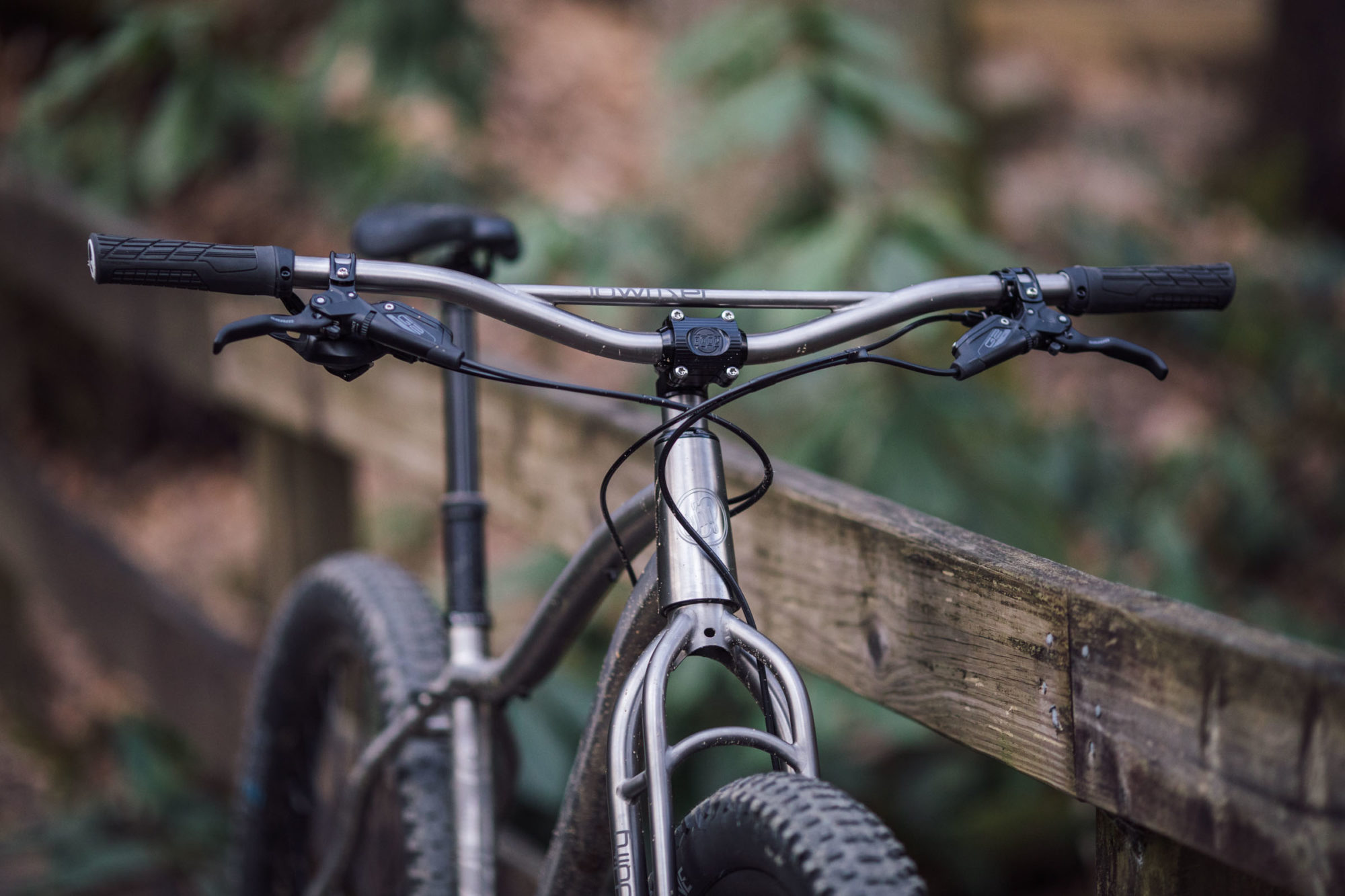
The Oddity Lowrizer has a 22.2mm clamp diameter and is 800mm wide. All I can really say about this bar is that I want one. It seems to have just the right width, backsweep, and rise for my taste, and the compliance afforded by the 22.2mm tubing is just about perfect. However, it’s a significant investment. Oddity sells the handmade Ti Lowrizer for $350, but there’s hope for those of use with thinner wallets… the Lowrizer also comes in steel for $150 (in flat or gloss black).
Pros
- Set up as the SquidWard, it’s the best riding rigid 29+ bike I’ve tried; and with the 120mm fork, the Wayward is definitely sits in the top echelon of trail hardtails I’ve ridden
- A well rounded geometry makes the Wayward live up to its unicorn status as a rare bike that does a lot very well
- Sliding rear dropout, rack mounts, and a plethora of braze-ons (for a full bolt on bag, too) make it well-equipped for bikepacking
- Geometry tweaks definitely make it lively on singletrack, although I didn’t ride V1, so I can’t compare directly
Cons
- Smaller frame bag space might be frustrating for some, particularly those in smaller frame sizes
- SquidWard build is expensive, but it’s also a handmade fork and a lifetime investment
- Size Tested Large
- Price (X01 Build) $5,899
- Price (frame) $2,449
- Weight (as tested) Check back soon
- Squidfork Upgrade $1,000
- Place of manufacture China (frame), Colorado, USA (Squidfork)
- Manufacturer’s Details WhyCycles.com
On the Trail (Wrap up)
I only have seven rides on this bike at this point, and zero bikepacking trips, although there were a couple extra-long day rides in there. So, I wouldn’t call this a full review. If you’re after that kind of analysis, make sure to check out TJ’s review of the Wayward here. I will say that I’ve spent a lot of time riding 29+ bikes over the years, including the original Krampus, the intrepid ECR, Tumbleweed’s Prospector, the Trek 1120, Salsa’s Woodsmoke, and the full-squish Deadwood. The Wayward wowed me out of the gate. On first impression, I’ll say that it (in SquidWard form) was the best riding rigid bike I’ve had the pleasure to throw my leg over.
As mentioned above in the cons, the reduced frame triangle size might be frustrating to some people eyeballing Wayward V2 as a bikepacking rig, but the shortened seat tube and additional room for a dropper will be welcome on the trail for many riders. Otherwise, with the additional mounts and versatile geometry, the Wayward V2 has a lot going for it as a dedicated bikepacking bike.
On the trail, the tubing certainly lives up to the claims made about it. The bike doesn’t feel at all squirmy, even on twisty and technical singletrack; it’s laterally stiff and responsive, but also does a fantastic job at soaking up downward blows and bumps. And while the Squidfork is amazing in that regard, I also had the opportunity to switch over to a suspension fork (see below right) and continued to be impressed over a couple more rides. It was immediately apparent that this was going to make my short list of favorite trail hardtails. All the measurements and angles seem perfect for this bike. Its low bottom bracket, slackish head tube (comparable to all other popular 29+ hardtails), long reach, and high stack all add up to a bike that’s responsive and lively—especially for a 29+ rig—and stable and comfortable when pedaling on long doubletrack climbs.
That being said, I get why TJ referred to this bike as the unicorn. The Wayward’s blend of quality tubing, provisions for bikepacking, and a well-rounded geometry that’s equally as competent on the trail as it is comfortable on dirt roads make it a rare bike that can do a lot extremely well.
Please keep the conversation civil, constructive, and inclusive, or your comment will be removed.













